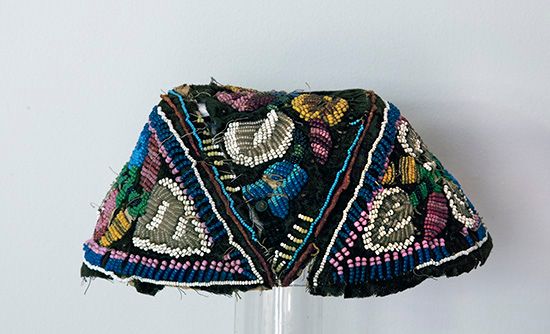Chickasaw
Our editors will review what you’ve submitted and determine whether to revise the article.
Chickasaw, Indigenous North American tribe of Muskogean linguistic stock who originally inhabited what is now northern Mississippi and Alabama. In their earlier history the Chickasaw and the Choctaw may have been a single tribe. Traditionally, the Chickasaw (self-name: Chikasha) were a seminomadic people who patrolled the immense territory that they claimed for themselves and raided tribes far to the north; like many conquering peoples, they integrated the remnants of these tribes into their culture.
History until Oklahoma statehood
Prior to the 1830s, Chickasaw dwellings were organized along streams and rivers rather than clustered in villages. Descent was traced through the maternal line. The supreme deity was associated with the sky, sun, and fire, and a harvest and new-fire rite similar to the Green Corn ceremony of the Muscogee (Creek) was celebrated annually.
Probably the earliest contact between Europeans and the Chickasaw was Hernando de Soto’s expedition in 1540–41. In the 18th century the Chickasaw became involved in the power struggles between the British and French, siding with the British against the French and the Choctaw. They also gave refuge to the Natchez in their wars with the French. Relations with the United States began in 1786, when their northern territorial boundary was fixed at the Ohio River. In the 1830s they were forcibly removed to Indian Territory (present Oklahoma) where, with the Creek, Cherokee, Choctaw, and Seminole, they were among the Five Civilized Tribes. For three-quarters of a century each tribe had a land allotment and a quasi-autonomous government modeled on that of the United States. In preparation for Oklahoma statehood (1907), some of this land was allotted to individuals from the Five Civilized Tribes; the rest was opened up to non-Native homesteaders, held in trust by the federal government, or allotted to formerly enslaved persons. Tribal governments were effectively dissolved in 1906 but have continued to exist in a limited form. Early estimates placed the tribe’s population at 3,000–4,000. At the time of their removal to Indian Territory they numbered about 5,000.
History after restoring the Chickasaw Nation
The Chickasaw Nation, which was dissolved in 1906, was recreated in 1983 when tribal members voted to ratify a new constitution that was approved by the U.S. government. In McGirt v. Oklahoma (2020) the Supreme Court ruled, in part, that the Muscogee (Creek) reservation had never been legally disestablished. In the wake of this decision, a judge in Oklahoma’s McClain county likewise ruled that the Chickasaw reservation had never been disestablished. In 2022 the estimated number of Americans with some Chickasaw ancestry was over 72,000.













